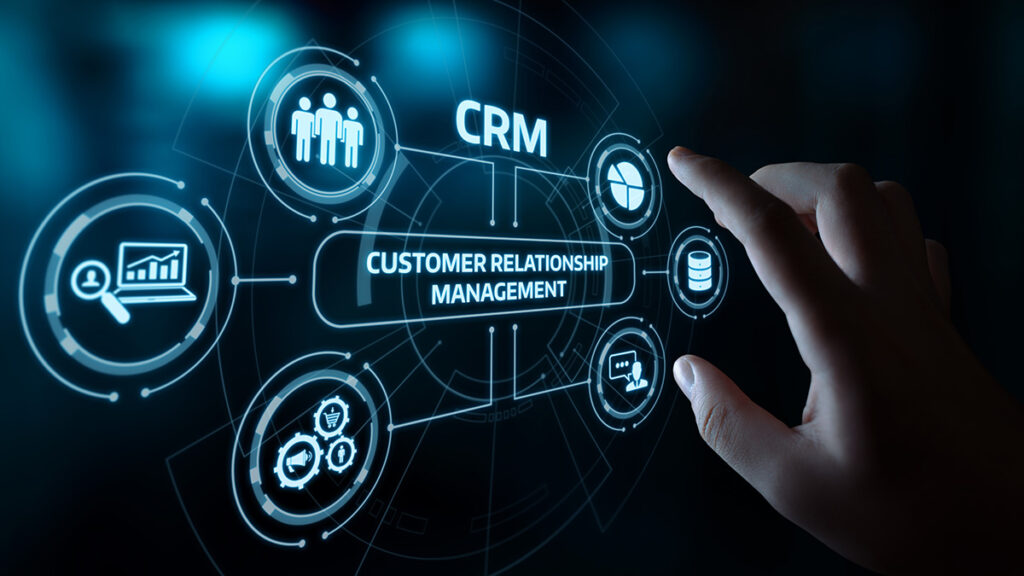IoT continues to grow in popularity and number of devices. Technology changes nearly all aspects of people’s lives today as new inventions and software consistently hit the market. It’s probably not surprising that it impacts customer relationship management (CRM) as more people tap into the powerful network of connected devices, software and computers.
IoT is made up of a huge network of interconnected devices exchanging data via the Cloud. Some of the items tapping into the system include sensors, home appliances, phones, vehicles, buildings and wearable items. From smart homes to smart office buildings to smart cities, new IoT devices hit the market frequently.
According to Statista, experts estimate the IoT market will reach around $172.30 billion in revenue in 2023. Growth will hit around 11.50% annually, with a result of a $297 billion market by 2028. As businesses tap into the capabilities of the IoT to drive customer engagement and productivity, CRM comes to the forefront and results in more satisfied and loyal customers.
What are the benefits of IoT in CRM? Here are a few ways in which IoT is Reshaping CRM and how to embrace them for any business model.
1. Drive Insights
With so many devices tapped into the Cloud, tons of data is constantly stored and analysed. Businesses can pull up insights into customer behaviour and usage patterns at any time, using internal data and generalised information from consumer buying habits.
Companies can take the data and integrate it with CRM software. The result is an in-depth report of the average buyer in any given niche. Using buyer personas, brands can personalise marketing campaigns, come up with new product recommendations and reach out to customers with customised messages meant specifically to solve their pain points.
2. Store Data
Imagine a world where people can upload any information, sign contracts digitally and access data from the convenience of a cell phone. IoT makes customer relationships easier because consumers don’t have to be tied to a desktop computer to conduct business and get answers.
For example, IoT-enabled apps can collect customer data, grab an electronic signature and sign people up for plans without human intervention. Electronic signatures can be legally binding, but it’s crucial to know the regulations for each area of the world. The EU states e-signatures are enforceable but needs to meet certain requirements. More recently, the UK adopted eIDAS as they’ve left the EU.
3. Adjust Prices on the Fly
Tapping into the power of the IoT helps companies see what competitors charge for comparative products and services. If the value of an item goes up, brands can raise prices to increase revenue. On the other hand, if a competitor has a sale, businesses can send out a message to current customers letting them know they’ll match the offer.
Pricing competitively improves the customer relationship, especially if brands provide a discount even when they aren’t required to do so.
4. Improve Customer Experiences
Personalises customer experiences by using IoT and AI alongside one another. If a customer uses an app or device to interact with the business, data gets stored. A program can then analyse the information and take the action that makes the most sense.
For example, if a particular customer orders and immediately calls with questions, the business can be proactive and phone the customer after an order to see if they have any concerns. The relationship improves because the customer feels validated and as though they’re receiving custom service from the company.
5. Predict Maintenance and Service Needs
The ways a brand utilises IoT in CRM depends on the products and services offered. CRM for a factory looks different than it does for an e-commerce store. Yet, they have similarities to one another at the same time.
Utilise sensors to predict machine maintenance and reduce downtime. Using IoT sensors can reduce maintenance costs as much as 30% and decrease the number of breakdowns.
Delivering products in a timely manner and ensuring consumers never run out of their favourites improves the connection between brands and their customers. When people know they can rely on a company to supply demand, they see the brand much more favourably.
6. Optimise Your Supply Chain
Tapping into the power of IoT allows companies to offer a better customer experience. Businesses can tap into systems and track inventory. Keep an eye on when popular products run low and let the system automatically reorder them so stock never goes to zero.
Online stores such as Walmart and Amazon have accustomed people to fast, cheap shipping. Brands must keep up by having items in stock and shipping them out as rapidly as possible. IoT allows organisations to optimise the shipping process and track it every step of the way. CRM software taps into the inventory control systems and notifies customers when an order is filled, shipped and estimated arrival times.
The more the system communicates with buyers, the more satisfied they’ll be with the service they receive.
Should You Integrate IoT and CRM?
Although tapping into the power of IoT for CRM offers a lot of pros, there are a few cons. Storing data in the Cloud opens companies up to potential cybersecurity breaches. Customer relationships might actually be harmed if personal information gets compromised.
Although IoT helps businesses streamline processes and keep up with the competition, it’s crucial to keep up with the potential risks and take steps to prevent them before they occur. Integrate as it makes sense and test each phase to ensure the changes benefit both the business and its customers.
Eleanor Hecks is the managing editor at Designerly. She’s also a mobile app designer with a focus on UI. Connect with her about digital marketing, UX and/or tea on LinkedIn.
